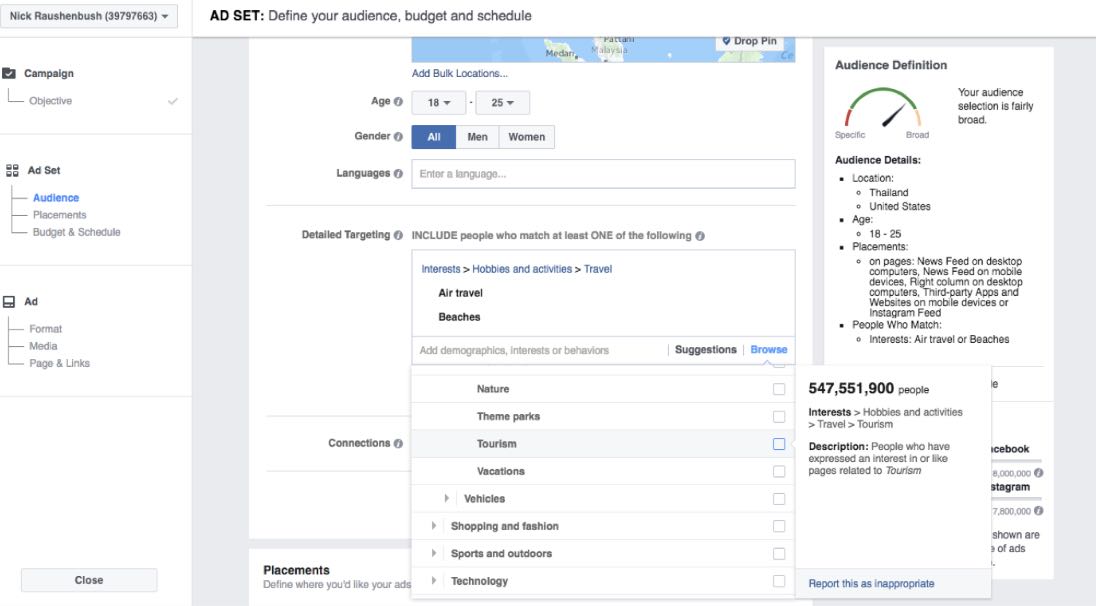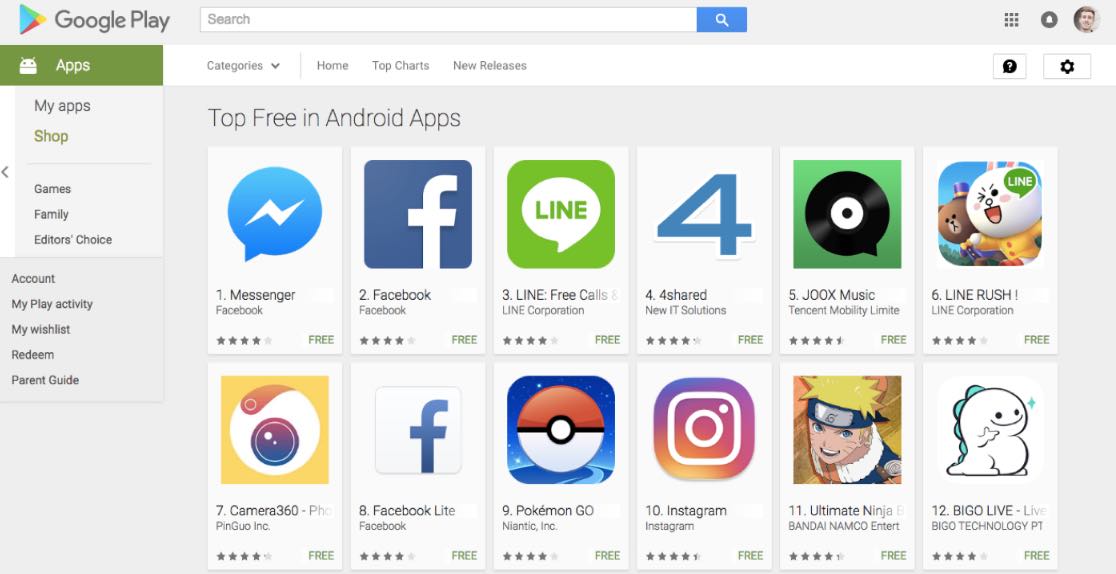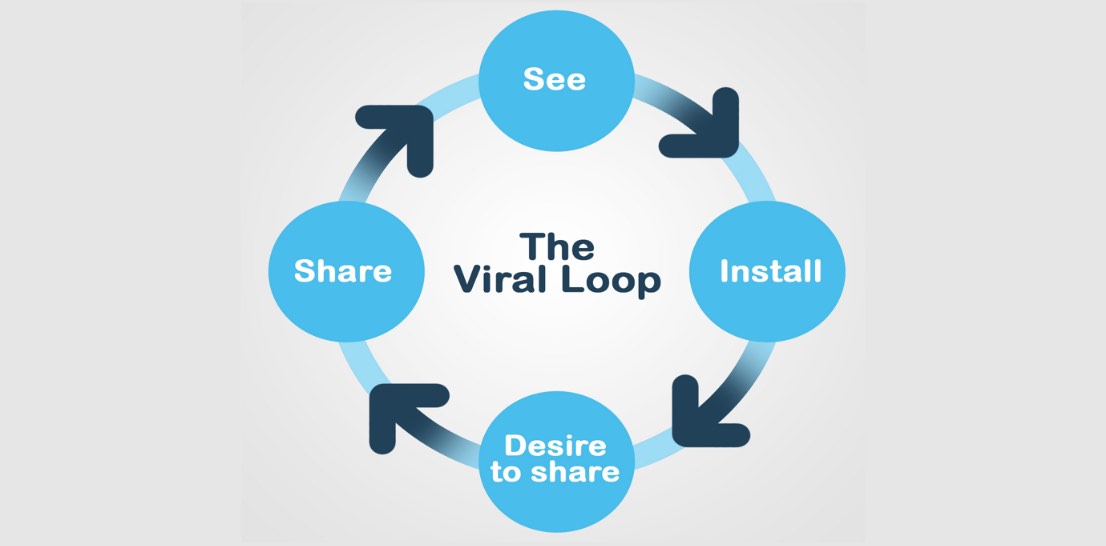10 Ways to Get Early Users for your Consumer Startup
A guide to consumer user acquisition for new founders.
You’ve followed the steps in How To Launch Your Startup, and had successful, or semi-successful, or not so successful launch. Congratulations! Unless your launch was a complete bomb (as in zero interest or anti interest), your next step is the same, regardless of success to date: you need to grow your user base.
In this early stage, user growth isn’t about hitting some vanity metric, getting written up in media like Techsauce or TechCrunch, or enacting some premature monetization plan; it’s about data. Precious user data.
Perhaps even more so than B2B products, it can be hard to nail the sticking point for consumer apps, be they web or mobile applications. Gaining users will get you the data you need to gain insight into what consumers find useful about your app. Based on these insights, you can pivot your product to something that is truly useful and “sticky” to consumers.
If you read my last piece, How to Acquire Initial Clients for your B2B Startup, you learned a few tips and tricks on how to target businesses. Although consumers are quite different, some of the methods for outreach are similar, just focused on different channels. Here are some of the early strategies and tactics I recommend for consumer startups to try out:
- Start Focused
- Online Communities
- Influencers
- Paid Advertising
- App Store Optimization
- Press
- Content Creation
- Social Media
- Offline Methods
- Viral Loop/Network Effect
Please note, because there are so many models for consumers startups (social mobile apps, ecommerce, on demand service apps, marketplaces, etc.), this article will just cover the generalities of consumer user acquisition.
1. Start Focused
Whether it’s hypertargeting a very specific group of people who would find your app particularly useful, or finding a more diverse microcosm of the world that is easier to target (like a college campus), starting small and focused has it’s benefits as a consumer user acquisition strategy.
Focus on an Interest
Try hypertargeting a subset of the population by narrowing in on the interests of a group of people. Keep in mind that there may be groups of people on the periphery of your direct target audience that may be applicable. Example: you have a “deal of the day app” for selling cars. The target user is a person in the market for a new car, but you might gain initial traction with the more tech savvy members of the automobile enthusiast community.
Focus on a Location
Pick a location to focus your efforts, whether it’s a college campus, or even a specific city. The idea is that you’re creating a microcosm of the world that is balanced and semi-representative for when you expand to a greater geographical reach. Example: you have a mobile dating app for serious one night stand relationships, so you may want to focus on young people living in Los Angeles to start.

The League dating app taking a city focused growth strategy.
Focus on a Profession.
May not always be applicable, but if their is a profession or professional community that would be closely associated with the consumer base you are trying to target, you can channel your reach through them. Examples: personal trainers and a fitness app, DJs and a music app, lawyers and bail bonds app, financial advisors and a personal budgeting app.
Many great companies have started with a narrow focus, and used that concentrated user adoption to expand into something much bigger. Remember, Facebook started with just Harvard University, then the Ivy league schools, opening to new universities incrementally, and then finally to everyone in 2006, two years after its initial launch.
Having a narrow focus strategy based on an interest, locale, profession, or other variable can be applied across user acquisition channels, including those listed below.
2. Online Communities
Online communities are a great way to learn more about your users, and engage with them in an organic way. Some of these communities may also have paid advertising options (to be covered shortly), but it can sometimes be a better strategy to just be a useful contributor instead of a shameless product promoter... at least to start. Here are a few community options to consider:
- Facebook Pages: There are Facebook Pages for everything. I’m sure you’ve liked one or two of them by now. Going back to the parameters of our “Start Narrow” strategy, think of pages in terms of interest, location, profession etc.
- Reddit Communities: For those unfamiliar, Reddit is a social media, web content rating, and discussion website that is basically composed of threads. These forums are comprised of “Sub Reddits” that dive deep into pretty much any topic you can think of. (**For those in Thailand/SEA: Pantip is a great example of a country specific online community akin to Reddit.)
Specialty Websites: Some existing consumer websites have done an amazing job of fostering online communities that can be tapped into. Examples: Bodybuilding.com forums for fitness enthusiasts, Soundcloud for music fans, TripAdvisor for travelers.
Bodybuilding.com has an impressive community of fitness enthusiasts.
As a contributor to the community, your goal should be to be helpful and useful to others. As the founder of a company in industry “X”, you’re probably a bit of an expert. Give tips and best practices, help members troubleshoot issues they may be having, contribute useful content, provide links to other resources. If your company happens to get plugged in there, great. Just don’t be overt about it. Your aim should not come across as self serving.
Pro-Tip: Try answering questions on the “Q&A” community, Quora. You can also write and then answer your own question.
3. Influencers
If you read, How to Acquire Initial Clients for your B2B Startup, you learned about Cold Email Outreach; a great solution for early day acquisition. Unfortunately, there is no real way to SPAM email consumers because there are just way too many of them, they would get super pissed, and they usually don’t leave their contact info around. If we could we would.
The next best thing is to reach out to the people who influence them, and get them to tell their audience about your company. Good outlets for influencers include: Blogs, Instagram, YouTube, and other Social Media Channels. Let’s talk about how to get their contact info, so we can email them asking for their help:
- Blogs are nice and easy. Bloggers generally leave their contact info on their “Contact” or “About Me” page of their blog (if not, it’s probably in their Twitter or Instagram profile), so the hard part is going to all the sites. To find the info, start by searching “Top Blogs for…” and your company industry. You’ll probably find some publication that lists a bunch of blogs. Send the list to a Virtual Assistant via a service platform like UpWork. You’re looking for a “Lead Generation Specialist” from the Philippines. Ask them to list {blog name}, {blogger first name}, {blogger last name}, {twitter handle}, {instagram handle} in a Google Sheet.
- Instagram or Twitter are a little more complex. The best way to do this is actually with a web-scraper. You want to query Instagram IG based on parameters for (1) specific hashtag references (i.e. for fashion could be #fashion #style #stylish #outfitoftheday), for (2) a specific date range (past 90 days), and (3) number of followers. The scraper should pull all structured data: username, number of followers, all text in their bio field, etc. If you’re technical, you probably already know your options. If you’re non technical, you hire someone to write a scraper and extract the info.You can hire a dev to write a scraper and turn over the data. Upwork and Fastwork are great places to find low priced dev talent to help you with this.
This consumer tech influencer is a YouTuber, and he left his email on his Instagram.
- YouTube is a bit of a pain in the ass. The contact info for the influencer is on the “About” page. You’ll see “For business inquiries: View email address”. Sometimes they leave it out, often they use the feature for protecting their email, which means that you have to enter a CAPTCHA code. You can create the list of influencer channels you want by searching the YouTube “Browse Channel” section using scraping software like Import.io. From there, outsource to a Virtual Assistant from UpWork to collect all the emails manually.
It’s probably pretty apparent in these examples, but the key is to automate as much as you can with scrapers, and then turn the rest of the redundant work over to virtual assistants who cost very little ($3-$4/hr.). Pro tip: when scraping, it’s good to do the first 10-25 manually, yourself, before you outsource it. The influencers channel may turn you on to events, associations, news, competitors, etc. that you otherwise wouldn’t know about.
For the email addresses, you will create sequenced email marketing campaigns in email outreach/automated marketing software like Outreach.io or PersistIQ.
In terms of email content, emails should be brief and informal. Try complimenting them on their content/expertise, and ask for their feedback on your new product in their space. Once you engage them in a conversation, you can angle for their advocacy.
The subject line “{first name} — quick question” generally yields a 70%+ Open Rate after 3 touches (3 emails). Here is content for a potential sequence 3 email sequence:
- Hey {first name} — I was checking out {blog/YouTube Channel/pictures on IG} and love your advice! I’m actually working on a project in the X space, and would love to get your thoughts. Do you have 10 min to chat sometime?
- Hey {first name} — just wanted to follow up here : )
- Hey {first name} — last email I promise. I’m not trying to sell anything, just looking to get an expert’s opinion on features for my project, and thought that you could provide insight. Do you have any time this week after 2:00p PST?
Some of these influencers will not have their email address on their social channels or website. Luckily, they still have a direct message feature, or an email collection form on their site. For these, simply instruction your Virtual Assistant to deliver the first message in the sequence via direct message. You can have them circle back on the account or site for subsequent messages several days later.
This tactic and formula can really be applied to any entity that you’re having more of a B2B interaction with: partnerships, sponsors, press, etc. Automate your email game.
4. Paid Advertising
I caution any early days startup diving into paid user acquisition, but if you have some seed or angel money and can get good results from paid ads, by all means. Just make sure you’re spending dollars on ads where you know your users are going to engage.
Not all consumer startups are best served by Facebook advertising, but are a much better fit for paid search, such as professional services or financial products. Some startups have products that people would never search for, but have amazing performance on Facebook, such as Kickstarter consumer hardware projects or mobile games.
Know your audience and what behaviors they are likely to perform when it comes to clicking or searching in relation to your product. That said, here are a few channels to consider:
Facebook Ads: Facebook Ads are super easy to use, and a really great way to target consumers. Before running Facebook Ads, take a moment to think about the defining factors of your target consumer:
- Demographics: gender, age, location, relationship status, income, etc.
- Psychographics: interests, emotions and opinions.
- Technographics: device ownership, online behaviors, social media usage, etc.
Target consumers by Demographics, Psychographics, and Technographics using Facebook’s Ads.
Facebook’s targeting capabilities won’t be able to address everything, but you can get pretty detailed. This will also help you make decisions around whether to serve the ad on both mobile and desktop, and whether you want to do some distribution through Instagram.
Reddit Advertising: If you know that your product has users hanging out on Reddit, you can try identifying those Sub-Reddits and paying for promoted posts. You can have your promoted post link directly to your product website or the app store. Budgeting for Reddit is CPM (Cost per impression).
Google AdWords: Start with using the Google Keywords Planner to identify the keywords and search terms that your audience is clicking. Start off with $100 spend, and see what kind of results that yields. Google Adwords is pretty extensive, and Google has lots of documentation and tutorials for How Google AdWords Works.
5. App Store Optimization
Get to the top with App Store Optimization (ASO)
If you’re working on a mobile app, your app’s performance in the App Store or on Google Play is going to have a significant impact on adoption rate. There are a few main factors that you should consider to set your app up for success:
- Title: The keywords placed in the title for your app should be the ones with the heaviest search traffic. Spend time researching which keywords those, because you shouldn’t change the title of your app too much.
- Keywords: Same as with the keywords in your title, the keywords in your app description should be the ones with the heaviest search traffic. It is helpful to look at competitor apps to see what keywords you’re competing on. Because keywords can be easily changed means that you can regularly optimize them.
- Ratings and Reviews: There are ways to incentivize happy users to rate and review your app which will help your app rankings. For a few ideas, read 5 Clever Ways to Increase Mobile App Reviews on the Kissmetrics blog.
- Total # of Downloads: Kind of out of your control, but number of downloads is extremely important to app store users, so get more users ASAP.
These tips can be applied to other marketplaces that have consumer facing apps such as the Chrome Web Store.
6. Press
If you can get press in the early days, take it. It will give you a nice little user spike to run with. Beyond that, I wouldn’t be overly concerned with PR, and I probably wouldn’t commit the tens of thousands of dollars to a PR firm to get articles written about you.
If you’re keen to try PR as a user acquisition route, it’s pretty simple to do it the “bootstrapped” way:
- Make a list of all relevant publications.
- Hire a Virtual Assistant to find all of the journalists that cover your field.
- Give the VA an email finder tool like SellHack or Toofr so they can get you the person’s First Name, Last Name, and Email Address from their LinkedIn profile.
- Have the VA organize the data in a Google Sheet.
- Create sequenced email marketing campaigns in email outreach/automated marketing software like Outreach.io or PersistIQ.
In your email, give them a pitch with an angle that makes it newsworthy, and provide your contact info. If you supply them with a press kit, you make their job easier, and if they are short on content that week, they might write up your company. But honestly, don’t be surprised if they ignore your emails and write you up at a later date when you’re actually newsworthy.
7. Content Creation
Just like with paid advertising, you need to know your audience and only create content that you know they will be likely to find and engage with. Blog content might be great for medical or financial products, whereas video content would be a much better fit for consumer hardware or social apps. Here are a few content mediums to consider:
- Video: There are many different kinds of video, so it is largely dependent on what kind of consumer startup you’re working on. Kickstarter/crowdfunding videos usually follow a very specific kind of formula (i.e. Superbook by Andromium), and can have a pretty apparent impact on ROI. Some startups hit it out of the park with a viral video (i.e. Dollar Shave Club), but having founded a creative agency that works with startups (Glass & Marker), I can tell you that this is very hard to replicate. Some consumer startups do well with a simple “Explainer Video” that gives a quick overview of their site, and the value proposition it gives to consumers. Video is usually pretty expensive, so figure out how you can do this DIY, and improve your video as you get more funding.
I think the original was taken down, but this is one of my favorite startup videos made on a budget.
- Blogging: When you write, don’t be too promotional about your product. Try to create content that is legitimately useful. Think about framing your content in the context of Best Practices, Case Studies, Expert Opinions, “How To” Guides, or Product Reviews/Comparisons. Of course, you will be angling for your own product, but try not to come across as distastefully biased. More info on how to create an SEO optimized content plan in How to Acquire Initial Clients for your B2B Startup.
- Photos/Memes/GIFs: If you know of a medium other than video or text that would cater well to your audience, go for it. Memes have become an increasingly popular medium for entertainment for younger generations. Animated GIFs are a great alternative to video for those who have shorter attention spans, or for video explainer content that can be broken into bite sized pieces.
8. Social Media
Social Media can take a while to get off the ground, but consumers and potential business partners will look there to see if you’re legit or not. Facebook, Twitter, Instagram, and even Snapchat are relevant for many consumer facing businesses. Get set up on Buffer for maintaining a posting schedule across platforms, and keep a daily social media presence.
When your Virtual Assistants are doing tasks like finding influencer contact info or contacts at publications, have them follow, add, etc. the influencer or on their IG, Twitter, FB.
Use social media channels to engage with your users through messaging, retweeing, liking, etc. It can also be a great way to approach individual users for UX interviews or reviews for your app. Social Media will also become a distribution platform for all of your content, any news or press about your app, updates and announcements, etc.
9. Offline Methods
Usually the word “offline” and startup growth aren’t used in the same sentence, but I would recommend considering any ways that early users can be gained “manually”. A few examples:
- Special Events: Attend special events that you know your target users will be attending (i.e. if you’re starting a social media platform for foodies, look for food festivals and cooking expos).
- Brick and Mortar: Consider brick and mortar stores that your users shop at, and see if you can partner with them (i.e. if you have a parenting app, you might talk to maternity and toy stores about placing fliers in their store, in exchange for in app advertising).
- Street Team: If there is a physical place that you know your target users will be gathering at, be that a sports event, the airport, or a mall, go there and ask them to try out your app. (i.e. if you have a new travel review site, go stand outside of the international terminal at the airport.)
Even though offline methods don’t necessarily scale, they will put you in close contact with users. This creates amazing opportunity for feedback and discussions that can improve your product.
10. Viral Loop/Network Effect
Especially for consumer apps of the social mobile variety, the phrases “viral loop” and “network effect” come up a lot. And of course, what business (consumer or B2B) wouldn’t want their startup to “go viral”.
A viral mechanism shouldn’t be an afterthought or temporary growth tactic, but more like a feature that is baked into the user experience. It involves creating an experience that looks something like this:
The sought after “Viral Loop” that accelerates startup growth.
So what creates that “Desire to Share”? Here are a few examples/strategies that you can consider applying to your app:
- Social Share for App Enhancement: The idea here is that the app gets better as you share it. Consumers are naturally inclined to do one or more of these activities: share in app content with each other, ask for their friends’ help (ex. Candy Crush), ask friends to team up (ex. group dating apps, or dating apps where you help your friends Coffee Meets Bagel).
- Invite Only: Apps that are invite only at launch (ex. Gmail Inbox) or have “Skip the Waitlist” (ex. The League dating app) can create a sense of exclusivity that prompts people to share.
- Incentivized to Share: Try providing some incentive to your users for sharing the app through their social channels, from their email account, or via SMS from their address book. Reward can be additional feature access, access to paid features for free, in app credits, etc.
- Incentivized to Review: Same as above but for reviewing the app in the app store. This improves App Store Optimization, which will in turn get more users to download the app, and then more reviews, causing the app to trend in the App Store or Google Play store.
- Simple Social Share: Simple as it sounds. Make sharing on social channels super easy (e.x. Instagram share to Facebook and Twitter) and cross platform.
Pro-Tip: For social apps that require a network effect or viral feedback loop to be successful, but don’t have any initial users. Determine if there is a useful/interesting standalone feature that you can build into your app before the other users arrive.
Just like the rest of your product, viral loops require iteration in order to become highly effective. Build, deploy, measure, and talk to your users to determine what actually drives results.
------
When it comes to user acquisition, there is no “one size fits alls” strategy or formula; you need to figure out where your users are, and their preferred channels for consuming and sharing content and ads. The aforementioned strategies are simply suggestions, and it will be up to you to test it out, and see what yields results in terms of conversion.
To track results, you will need to have an understanding of web and mobile analytics to see where your conversion funnels succeed and fail. Analytics will also help you understand your user behavior, so you can gain insight into what they like and what they don’t like about your product. For these reasons, the next posts in this series will focus on How to Use Web and Mobile Analytics.
ลงทะเบียนเข้าสู่ระบบ เพื่ออ่านบทความฟรีไม่จำกัด












